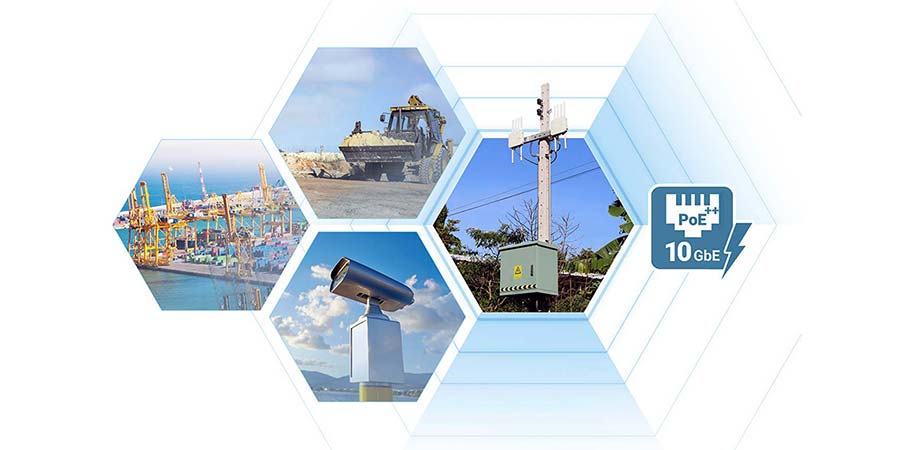HOME / Technologies / Why and How to Combine 10 Gigabit Ethernet with PoE++?
Why and How to Combine 10 Gigabit Ethernet with PoE++?
As industries such as industrial networking, smart surveillance, and edge AI systems demand higher bandwidth and faster data transmission, Ethernet speeds have evolved from the traditional 1 Gb/s to 2.5 Gb/s, 5 Gb/s, and now to 10 Gb/s. This progression supports large-scale data applications such as 8K/4K video streaming and advanced machine vision.

When devices require both data transmission and power through a single cable, PoE (Power over Ethernet) technology offers a streamlined solution to simplify cabling, reduce installation costs, and enable greater flexibility—particularly beneficial for distributed or remote deployments in harsh environments.
| Standard | IEEE Specification | Power per Port | Typical Applications |
| PoE | IEEE 802.3af | 15.4 W | IP cameras, VoIP phones, low-power devices |
| PoE+ | IEEE 802.3at | 25.5 W | Advanced cameras, multi-stream sensors |
| PoE++ | IEEE 802.3bt Type 4 | 90 W | Edge AI devices, ultra-high-resolution cameras, Wi-Fi 6E access points |
Integrating 10 Gb/s Ethernet for ultra-fast data transmission with IEEE 802.3bt PoE++ (Type 4) for high-power delivery (up to 90 W per port) represents a leap forward for modern edge AI, smart surveillance, and industrial automation systems.
This combination meets the bandwidth and power needs of AI inference and ultra-high-resolution imaging, while offering scalability for future devices with higher resolutions, complex models, and more sensors.
Despite the advantages, integrating 10 Gb PoE++ solutions into embedded systems—especially in industrial-grade, space-constrained, and harsh environments—poses several challenges:
- Thermal management and temperature tolerance – High-power PoE++ cards generate significant heat, which can impact performance in low-cooling or extreme-temperature environments.
- Form factor and system integration – Compact PCIe slots in embedded or edge systems may not accommodate oversized cards.
- Signal integrity – 10 Gb/s transmission requires high-quality PCB design and EMI protection for stable connectivity.
- Management and control capabilities – Cards should provide APIs or firmware controls for PoE port power management and device resets.
- Remote deployment and maintenance – In outdoor or inaccessible locations, reliability and remote management are critical for minimizing downtime.
To address these challenges, Neousys offers the PCIe-PoE572bt, a dual-port 10GBASE-T PoE++ card delivering up to 90 W per port with RDMA support. Featuring wide-temperature operation (-25 °C to 70 °C), a low-profile PCIe Gen3 x4 design, and API-based PoE control, it ensures reliable, high-performance connectivity for industrial edge applications.
